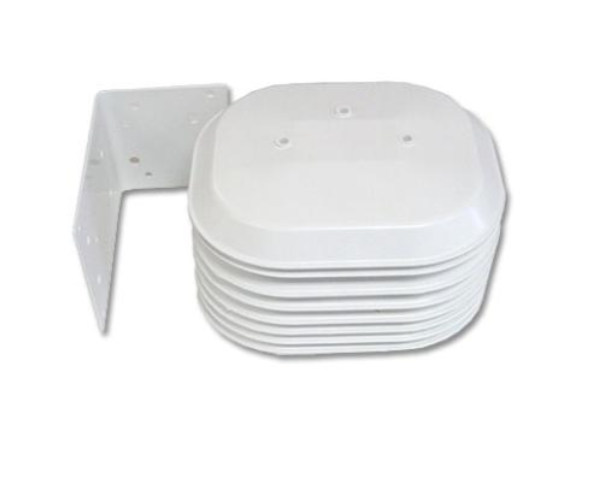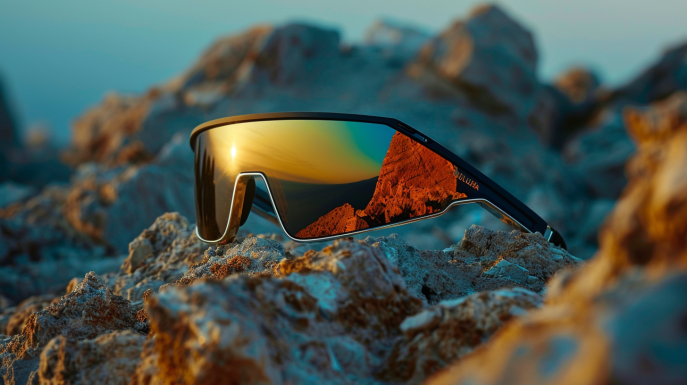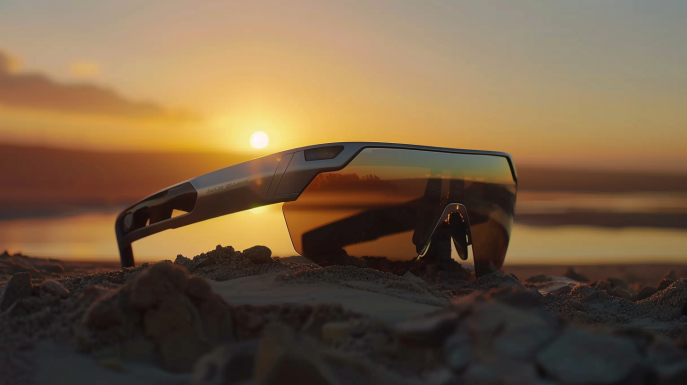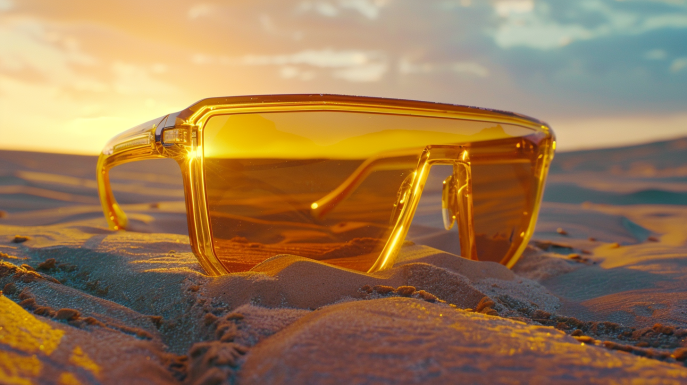
Solar Radiation Shield
- For temperature and relative humidity measurement accuracy in locations exposed to direct or reflected sunlight; ideal for use with the HOBO MX2300, HOBO Pendant, and U-Series data loggers.
Unveiling the Unsung Hero of Accurate Weather Measurements
In the world of meteorology and environmental monitoring, precision is paramount. Enter the solar radiation shield – an unassuming yet crucial component that can make or break the accuracy of your weather measurements. Whether you’re a weather enthusiast, a professional meteorologist, or simply someone looking to up their backyard weather station game, this comprehensive guide will illuminate everything you need to know about solar radiation shields.
What on Earth is a Solar Radiation Shield?
Let’s kick things off with the basics. A solar radiation shield, also known as a thermometer screen or Stevenson screen, is a protective enclosure designed to shield temperature and humidity sensors from direct sunlight and precipitation while allowing free air circulation. Picture it as a high-tech umbrella for your delicate measuring instruments.
But why all the fuss about shielding? Well, imagine trying to get an accurate reading of the air temperature while standing in direct sunlight on a scorching summer day. You’d be cooking faster than a hot dog at a barbecue! The same principle applies to your sensors. Without proper shielding, they’d be measuring the heat from the sun rather than the actual air temperature.
The Magic Behind the Shield
So, how does this nifty device work its magic? It’s all about clever design and physics. A typical solar radiation shield consists of multiple overlapping plates or louvers, usually made of UV-resistant plastic or other durable materials. These plates are arranged in a way that allows air to flow freely around the sensors while blocking direct sunlight and precipitation.
The design creates a microclimate within the shield that closely mimics the surrounding air conditions. It’s like giving your sensors their own personal climate-controlled bubble – minus the tiny air conditioning unit, of course!
Shopping for Shields: Where to Find Your Perfect Match
Now that you’re sold on the idea of a solar radiation shield (and who wouldn’t be?), you might be wondering where to snag one. Fear not, shield seekers! These essential accessories are widely available from various sources:
- Meteorological equipment suppliers
- Online marketplaces like Amazon and eBay
- Specialty weather instrument retailers
- Some hardware stores and garden centers
When shopping, keep in mind that quality matters. A flimsy shield is about as useful as a chocolate teapot, so invest in a reputable brand or model recommended by weather enthusiasts and professionals.
The Perks of Proper Shielding
Investing in a good solar radiation shield isn’t just about joining the cool kids’ club of weather monitoring (although that’s a perk). There are some serious benefits to using one:
- Increased accuracy: By eliminating the sun’s direct influence, you get a true reading of air temperature and humidity.
- Consistent measurements: Shields provide a stable environment for your sensors, leading to more reliable data over time.
- Protection from the elements: Your expensive sensors will thank you for the shelter from rain, snow, and harsh sunlight.
- Improved data comparison: Standardized shielding allows for better comparison of data across different locations and time periods.
Show Me the Money: Cost Considerations
Like most things in life, the cost of a solar radiation shield can vary wildly depending on quality, size, and features. You can find basic models for as little as $20-$30, while professional-grade shields can set you back several hundred dollars.
Remember, though, that this is an investment in the accuracy of your data. Skimping on your shield is like buying a Ferrari and filling it with bargain-bin fuel – you’re not going to get the best performance.
The Word on the Street: Reviews and Recommendations
Before you whip out your credit card, it’s always wise to see what others are saying. Look for reviews from fellow weather enthusiasts, professional meteorologists, and reputable weather equipment websites. Pay attention to factors like durability, ease of installation, and most importantly, how well the shield performs in various weather conditions.
Some popular brands that often receive praise include Davis Instruments, Ambient Weather, and Apogee Instruments. But don’t just take my word for it – do your homework and find the shield that best fits your needs and budget.
Under the Hood: Materials Matter
When it comes to solar radiation shields, not all materials are created equal. The most common options include:
- UV-resistant plastic: Lightweight, affordable, and effective for most applications.
- Aluminum: Offers excellent heat reflection and durability but can be pricier.
- Specialized composites: High-end shields may use advanced materials for optimal performance.
The key is to choose a material that can withstand your local climate conditions while effectively shielding your sensors. If you live in an area with extreme temperatures or harsh sunlight, investing in a more robust material might be worth the extra cost.
DIY or Buy: Installation Insights
So, you’ve got your shiny new solar radiation shield – now what? Installation methods can vary depending on the model, but most follow a similar principle:
- Choose a suitable location away from heat-reflecting surfaces.
- Mount the shield securely, ensuring it’s level and properly oriented.
- Install your temperature and humidity sensors inside the shield.
- Ensure proper ventilation and clearance around the shield.
Many shields come with detailed installation instructions, and there are plenty of online resources and videos to guide you. If you’re not the handy type, consider hiring a professional to ensure your shield is installed correctly.
Weather Station Wonders: A Perfect Pairing
If you’re running a weather station, a solar radiation shield is not just a nice-to-have – it’s practically essential. Most quality weather stations either come with a built-in shield or are compatible with add-on shields. The shield ensures that your station’s temperature and humidity readings are as accurate as possible, giving you data you can trust.
Shield Styles: Finding Your Type
Just like there’s more than one way to predict the weather, there’s more than one type of solar radiation shield. The most common varieties include:
- Multi-plate shields: The classic design with multiple overlapping plates.
- Louvered shields: Features angled slats for enhanced airflow.
- Aspirated shields: Includes a fan to actively draw air through the shield.
- Naturally aspirated shields: Relies on natural air circulation.
Each type has its pros and cons, so consider your specific needs and environmental conditions when choosing.
Effectiveness: How Well Do They Really Work?
The million-dollar question: just how effective are these shields at reducing solar radiation? The answer is – very effective when properly designed and used. A good-quality shield can reduce temperature errors caused by solar radiation by up to 95%.
However, it’s important to note that no shield is perfect. Factors like wind speed, the angle of the sun, and the shield’s design can all influence its effectiveness. That’s why professional weather stations often use multiple shields or advanced designs to ensure the highest possible accuracy.
Beyond Weather: Other Applications
While weather monitoring is the most common use for solar radiation shields, these versatile devices have other applications too:
- Agricultural monitoring
- Building energy management
- Solar panel efficiency testing
- Environmental research
- Industrial process control
Anywhere that requires accurate temperature and humidity measurements in an outdoor environment can benefit from a solar radiation shield.
Keeping It Clean: Maintenance Tips
Like any outdoor equipment, your solar radiation shield will need a little TLC to keep it performing at its best. Here are some maintenance tips:
- Regularly clean the shield to remove dust, debris, and bird droppings.
- Check for any damage or warping of the plates.
- Ensure the shield remains level and securely mounted.
- Periodically check the sensors inside for proper functioning.
A well-maintained shield will provide years of reliable service, so don’t neglect this important task!
Warranty Wisdom: Protecting Your Investment
When shopping for a solar radiation shield, don’t forget to check the warranty. Many reputable manufacturers offer warranties ranging from one to five years. Some even offer limited lifetime warranties on certain components.
A good warranty can provide peace of mind and protect your investment. Just be sure to read the fine print and understand what is and isn’t covered.
Deals and Steals: Finding Discounts
Who doesn’t love a good deal? While solar radiation shields aren’t typically the subject of door-buster sales, there are ways to save:
- Look for seasonal sales, especially before the start of severe weather seasons.
- Check for bundle deals when purchasing with other weather equipment.
- Sign up for newsletters from weather equipment retailers for exclusive discounts.
- Consider slightly older models that may be discounted when new versions are released.
Remember, though, that the cheapest option isn’t always the best value. Prioritize quality and accuracy over saving a few bucks.
The Return Game: Understanding Policies
Before you buy, familiarize yourself with the seller’s return policy. Most reputable sellers offer returns within a certain timeframe, usually 30 days. However, some may have restrictions on returns for used or installed equipment.
If you’re unsure about which shield to choose, a generous return policy can allow you to test the shield and ensure it meets your needs.
Built to Last: Durability Matters
A good solar radiation shield should be able to withstand whatever Mother Nature throws at it. Look for shields made from durable, UV-resistant materials that can handle extreme temperatures, high winds, and prolonged sun exposure.
Some shields are designed to be more robust than others, so consider your local climate when making your choice. If you live in an area prone to severe weather, it might be worth investing in a more heavy-duty model.
Extreme Weather Warriors
Speaking of severe weather, can solar radiation shields handle extreme conditions? The short answer is yes – if they’re designed for it. Many high-quality shields are built to withstand everything from scorching heat to freezing cold, high winds to heavy snow loads.
However, it’s important to choose a shield rated for your specific climate. A shield designed for mild temperate zones might not cut it in the Arctic or the Sahara.
The Long Haul: Lifespan and Longevity
With proper care and maintenance, a good solar radiation shield can last for many years. The exact lifespan will depend on the quality of the shield, the materials used, and the environmental conditions it’s exposed to.
On average, you can expect a well-made shield to last anywhere from 5 to 10 years or even longer. Some users report using the same shield for 15-20 years with proper care!
Making the Right Choice: Your Shield Selection Guide
So, how do you choose the perfect solar radiation shield for your needs? Here’s a quick checklist to guide your decision:
- Consider your climate and local weather conditions.
- Determine your budget and desired level of accuracy.
- Think about the size and type of sensors you’ll be using.
- Decide whether you need a passive or aspirated shield.
- Read reviews and seek recommendations from experienced users.
- Check for compatibility with your existing weather equipment.
- Consider the warranty and after-sales support.
Remember, the best shield for you is the one that meets your specific needs and provides reliable, accurate data for your application.
In conclusion, a solar radiation shield might not be the most exciting piece of weather equipment, but it’s certainly one of the most important. By protecting your sensors from the sun’s mischievous rays, it ensures that your weather data is as accurate as possible. So go forth, shield shoppers, and may your temperature readings be true and your humidity measurements spot-on!



